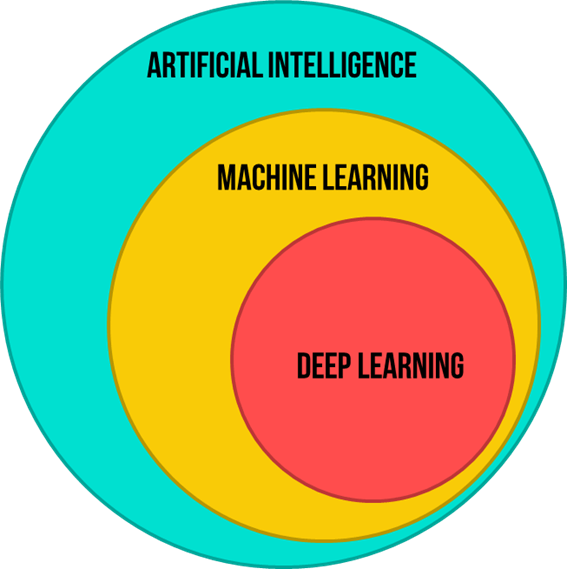What Is ML-AI?
Artificial intelligence (AI) and machine learning (ML) are two fields that are changing how we live and work. AI is the comprehensive concept of machines performing tasks in a "smart" manner, whereas ML is a subset of Artificial intelligence that includes the use of algorithms to enable machines to learn from data and enhance their performance on a specific task over a period.

One of the greatest significant benefits of AI and Machine Learning is their ability to analyze large amounts of data quickly and precisely. This enables businesses to make better decisions based on real-time data, and it enables the development of previously unimaginable new products and services. ML algorithms, for example, are being used to develop personalized recommendations for online shoppers, detect fraud in financial transactions, and more accurately diagnose medical conditions.
An even major benefit of AI and ML is their ability to automate repetitive tasks, which can help businesses enhance their efficiency and productivity. This is especially true in industries like manufacturing and logistics, where machines are progressively being used to perform tasks previously carried out by humans.
Despite the numerous potential benefits of AI and machine learning, there are some issues with their impact on society. The use of AI and ML in decision-making processes, for example, can be biased if the algorithms are not trained on diverse and representative data sets. There is also the possibility that AI and ML will displace human workers, which could have serious economic and social consequences.
Are Artificial Intelligence And Machine Learning The Same Things 🤔?
No, they are not, here are seven key points that differentiate AI from machine learning:
Definition: AI refers to the overall field of building intelligent systems, while ML is a specific technique for training models to learn from data.
Scope: AI covers a wide range of technologies and approaches, including machine learning, natural language processing, robotics, and more. ML is a specific technique within the field of AI.
Training: ML algorithms and models are trained using data, while traditional AI systems may be programmed with rules and instructions.
Adaptability: ML models can adapt and improve based on new data, while traditional AI systems may require manual updating.
Decision-making: ML models can make predictions and decisions based on data, while traditional AI systems may use rules and logic to make decisions.
Types of tasks: ML is often used for tasks that involve making predictions or decisions based on data, such as image classification or fraud detection. AI can be used for a wide range of tasks, including decision-making, natural language processing, and more.
Level of intelligence: ML models can perform specific tasks based on the data they were trained on, but they do not have general intelligence like humans. AI systems can exhibit a wide range of intelligence, from simple rule-based systems to more advanced systems that can exhibit human-like intelligence.
What Is Deep Learning And How It Is Different From AI-ML?
Deep learning falls under machine learning, which itself falls under artificial intelligence. But what are their genuine contrasts and similarities?
The relationship between them is sometimes represented as a set of concentric circles, with DL at the center and AI on the outside.

Deep learning (DL) is a type of machine learning that uses artificial neural networks to learn and make decisions. It is called "deep" learning because the neural networks have multiple layers, or "depths," that allow them to learn and make decisions based on multiple levels of abstraction.
Deep learning has been successful in a wide range of applications, including image and speech recognition, natural language processing, and more. It has been particularly successful at tasks that require the model to learn complex relationships in data and make decisions based on those relationships.
Deep learning is often implemented using neural network architectures such as convolutional neural networks (CNNs) and recurrent neural networks (RNNs). It requires large amounts of labeled data and significant computational resources to train.
Deep learning, in contrast, uses several layers, and it's these additional, "hidden," processing levels that give deep learning its name. Deep learning algorithms are essentially self-training in that they can evaluate and improve their accuracy over time by analysing their own predictions and outcomes. Deep learning algorithms have the ability to learn on their own.
Why AI-ML Is Important In Real Life?
Artificial intelligence (AI) and machine learning are significant because they enable computers to learn and carry out tasks without explicit programming. This enables them to learn and adapt over time, as well as carry out a variety of activities more effectively and precisely than humans can.
To free up human attention for more difficult and innovative work, AI can also be utilized to automate regular or repetitive jobs. AI can assist to increase efficiency and accuracy in sectors like healthcare and finance, which would benefit customers and patients.
AI/ML Examples And Use Cases 🤯:
Healthcare⚕️:
Machine learning can be used to analyze medical images, such as X-rays and CT scans, to detect abnormalities and assist with diagnosis. It can also be used to predict the likelihood of certain diseases based on patient data, such as age, gender, and medical history.
Finance💹:
Machine learning can be used to detect fraudulent transactions and to make predictions about market trends and the likelihood of certain outcomes. It can also be used to personalize financial products and services, such as recommending investment portfolios or credit card offers.
Manufacturing👷🏻:
Machine learning can be used to optimize production processes, predict equipment failures, and improve supply chain efficiency. It can also be used to analyze customer data to predict demand for certain products and to optimize inventory management.
Retail🛍️:
Machine learning can be used to personalize recommendations for online shoppers and to optimize pricing and marketing strategies. It can also be used to improve the accuracy of demand forecasting and to optimize the placement of products in stores.
Transportation🚄:
Machine learning can be used to optimize routing and scheduling for delivery companies and to predict maintenance needs for vehicles. It can also be used to improve traffic flow in cities by analyzing traffic data and making recommendations for changes to traffic signals and road layouts.
Pros 👍🏻 And Cons 👎🏻 Of This Technology.
The advantages and disadvantages of AI (artificial intelligence) depend on how it is used and the context in which it is applied.
Some potential advantages of AI include:
Improved accuracy 🎯and speed: AI algorithms are capable of processing large amounts of data quickly and accurately, which can enable businesses to make more informed decisions and develop new products and services.
Increased efficiency and productivity: AI can automate repetitive tasks, which can help businesses to increase their efficiency and productivity. This is particularly relevant in industries such as manufacturing and logistics.
Enhanced customer experience: AI-powered chatbots and other applications can provide personalized, real-time support to customers, which can improve the overall customer experience.
However, there are also some potential disadvantages of AI, including:
Bias: AI algorithms can incorporate bias if they are trained on biased data sets, which can result in unfair and discriminatory outcomes.
Job displacement: The automation of tasks previously performed by humans has the potential to displace workers, which could have significant economic and social implications.
Security and privacy risks: AI algorithms can be vulnerable to hacking and other security threats, which could compromise sensitive data and personal information.
Some Artificial Intelligence Job Roles That Are Most In Demand 🧑🏻💻.

There are many different job roles within the fields of machine learning and artificial intelligence. Some of these roles include:
Machine learning engineer: This role involves developing and implementing machine learning models and algorithms.
Data scientist: This role involves using machine learning and statistical techniques to analyze and interpret data.
AI engineer: This role involves developing and implementing AI systems and applications.
NLP engineer: This role involves developing and implementing natural language processing systems and algorithms.
Computer vision engineer: This role involves developing and implementing computer vision algorithms and systems.
Robotics engineer: This role involves developing and implementing machine learning and AI algorithms for use in robotics applications.
Deep learning engineer: This role involves developing and implementing deep learning algorithms and models.
Reinforcement learning engineer: This role involves developing and implementing reinforcement learning algorithms and systems.
Skills Required To Get A Job In This Field.
There are many different roles and specialties within the field of artificial intelligence (AI) and machine learning (ML), and the specific skills required for a job in this field will depend on the role and the industry.
In general, some common skills that may be useful for a job in AI or ML include:
Strong math skills, including linear algebra, calculus, and statistics
Proficiency in programming languages such as Python, R, and C++
Experience with machine learning libraries and frameworks such as TensorFlow, PyTorch, and sci-kit-learn
Knowledge of data preprocessing and manipulation techniques
Experience with data visualization tools such as Matplotlib and Seaborn
Strong problem-solving and critical-thinking skills
Ability to work with large, complex datasets
Experience with software development practices, including version control and testing
